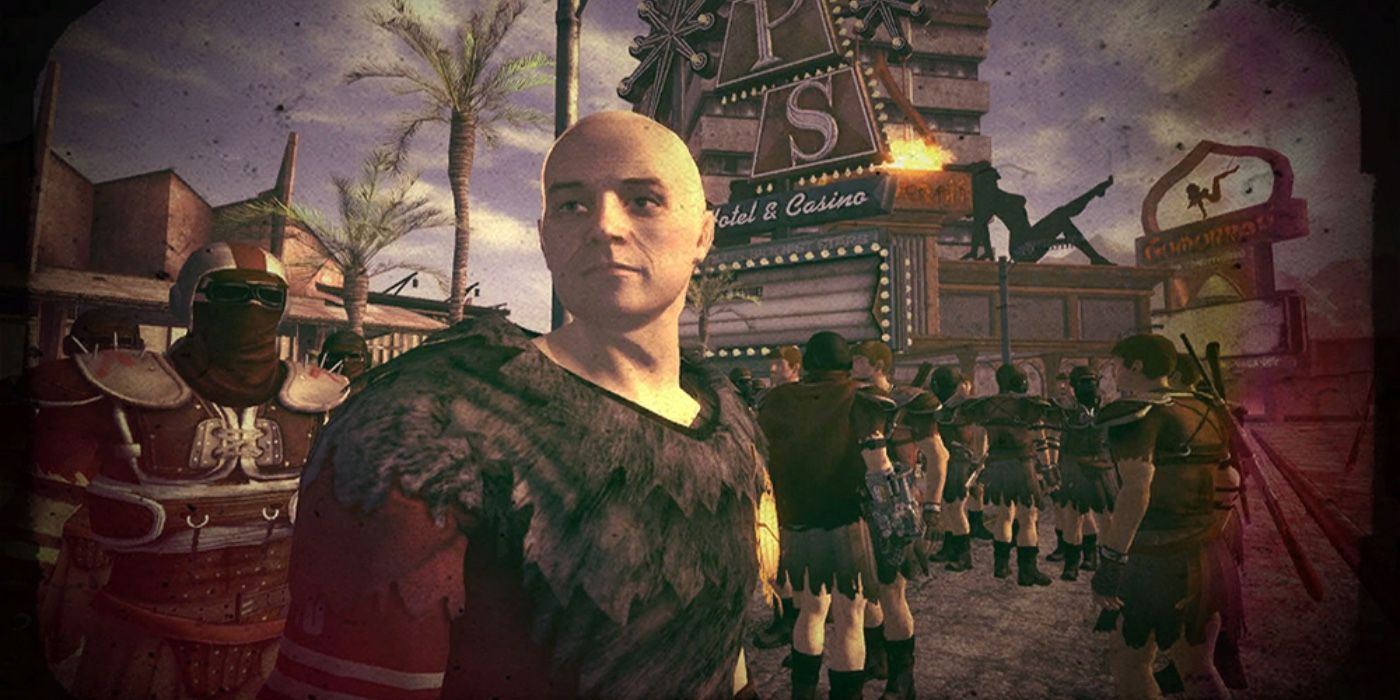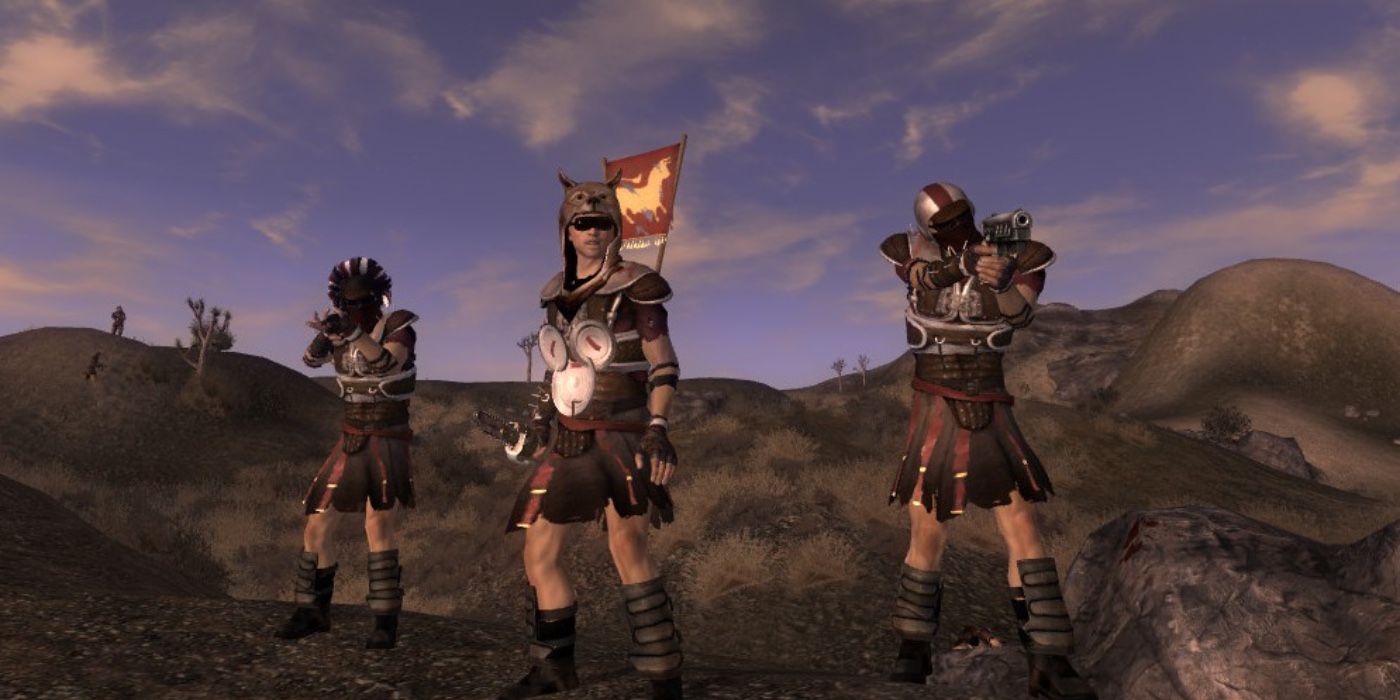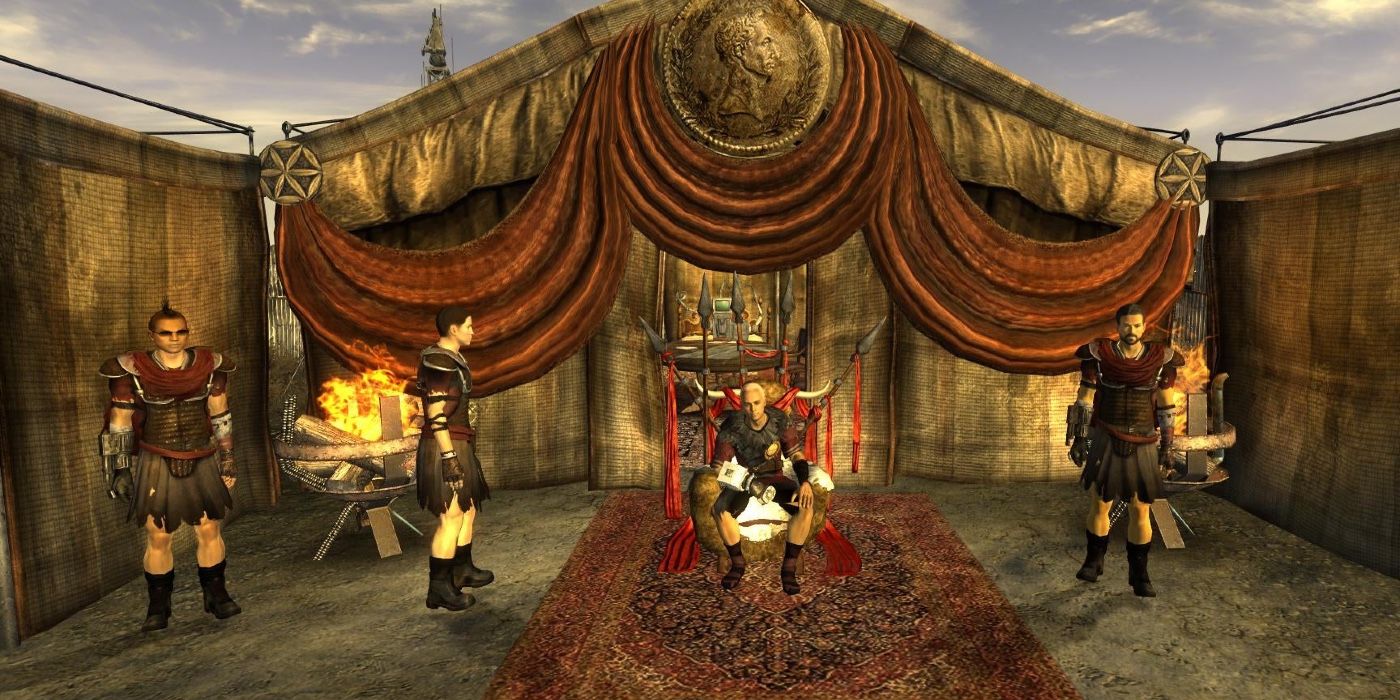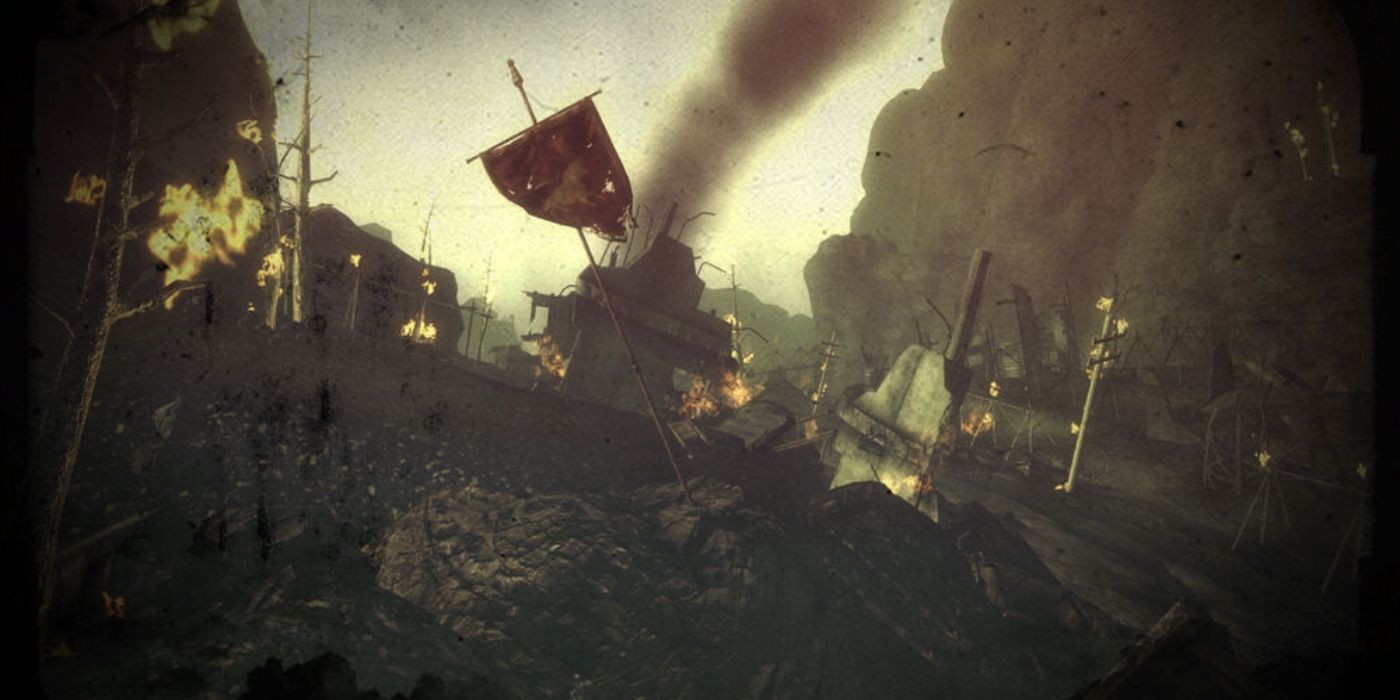In Fallout: New Vegas, it doesn't take long for Courier Six to hear tales of Caesar's Legion, but it isn't until they lay eyes on the smoldering ruins of Nipton that they'll realize just how brutal and terrifying they are. How this army from seemingly out of time became a major faction is complicated to say the least, and it starts in 2246, when the Followers of the Apocalypse sent a group to the Grand Canyon to study the regions tribal dialects.
Among them was the young scientist Edward Sallow and the Mormon missionary Joshua Graham. At some point in their travels, they were captured by the Blackfoot tribe with the intent of being held for ransom. At the same time, the Blackfoots were at war with seven other tribes, and Edward feared they would be killed along with the tribals, who were on the brink of losing. Against the advice of the rest of the Followers, he taught the Blackfoots the art of advanced warfare and battle tactics based off his knowledge of the ancient Roman Empire.
Under his guidance, the Blackfoots defeated and subjugated neighboring tribes, which came to regard Swallow as their chieftain. He later crowned himself "Caesar" and decreed that all peoples and tribes under him would set aside their old identities and embrace his vision of a society modeled after the Romans, even using a mix of English and Latin as their nation's language. Caesar then sent the team away to return to the Followers, warning them not to interfere in the Legion's campaigns. However, Joshua chose to stay with Caesar and act as his second in command, now referred to as the Malpais Legate.
Under Caesar's rule, the Legion became an imperialistic, totalitarian dictatorship that would go on to conquer 87 tribes. To divide and conquer these tribes more easily, they often allied with one and together defeated another tribe before breaking the alliance and absorbing them into the Legion as well. Such was the fate of Ulysses' tribe, the Twisted Hairs of Arizona.
Their battle doctrine has legionaries deployed in waves, with recruits upfront, prime soldiers behind them, and veterans or commanders bringing up the rear. The enemy would wear itself out dealing with the first two waves, with the veterans mopping up any remaining resistance. However, the extreme discipline and obedience of the lower ranks require a strong chain of command to guide the soldiers on the battlefield. Without such commanders, the regular Legionaries typically become disorganized and much easier to defeat.
The Legion also employs a robust spy network run by its Frumentarii agents, who engage in espionage and commit acts of sabotage behind the frontlines. Some of these agents even go deep undercover and infiltrate the ranks of their enemy's armed forces. They're also typically the legionaries who represent the Legion when seeking alliances with other tribes and factions.
The Legion's ideology is centered on survival and long-term stability of the state at all costs. Caesar reasoned that the only way to achieve his goals is through enforcing a nationalist, imperialist, totalitarian, homogeneous culture that obliterates the identities fo those conquered. The individual has no value beyond their utility to the state, whether as an instrument of war or production. In this sense, the Legion is considered the exact opposite to the New California Republic, who advocate representative democracy.
The Legion is infamous for its brutality, deliberately committing atrocities to terrorize their enemies and break their morale. They're known to sometimes use children as traps and soldiers, engage in torture, rape and generally terrorize civilian populations. They'll also crucify any who offer resistance, making them an example for anyone who dares go against the Legion. Women have no rights and are expressly forbidden from fighting, being regarded as little more than caretakers and breeding stock.
While the Legions methods are almost universally regarded as barbaric, some concede that they are also effective in maintaining stability. Compared to most of the NCR's territory, where raiders and mutant creatures continue to be a problem, Legion lands are incredibly well protected. Many independent traders prefer to travel through Legion territory, where they aren't taxed and usually don't need to hire mercenaries for protection.
In 2277, the Legion would face its greatest adversaries yet; New Vegas and the NCR. When scouts discovered the Mojave, Caesar mobilized his forces to attack the NCR and take Hoover Dam with the goal of taking the entire region later on. However, the first battle for the dam ended in disaster, as the NCR and its Army managed to repel the attack, wiping out the entire Legion attack force.
Humiliated and enraged at his Legate who commanded the failed attack, Caesar had Graham covered in pitch, lit on fire and thrown into the Grand Canyon to be made an example of. He replaces Graham with Legate Lanius as commander of the Legion military, though it's rumored that Graham somehow survived. Additionally, the loss of so many legionaries forced Caesar to offer secondary factions the opportunity of allying with the Legion to gain an edge over the NCR.
While the first battle for the dam was a major blow, by 2281, the Legion managed to recover from its losses and slowly started encroaching on New Vegas and the southern lands of the Mojave. After destroying several NCR controlled outposts and towns, terror is spreading, and people are genuinely worried that the Legion might actually win.
However, there are also rumors that something is wrong with Caesar, whose commanders have noted has been complaining of headaches. Sallow's leadership enabled the Legion to grow, but his death might also lead to its downfall. Whether or not Caesar can build an empire greater than Rome that outlives him or suffers the same demise is ultimately determined by the actions of the Courier.




